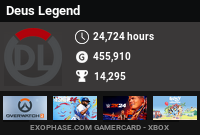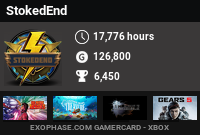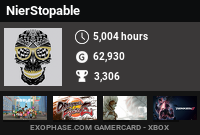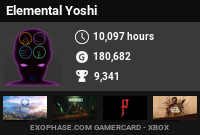Originally released on PC a year ago, it now comes to consoles under the name Redout: Lightspeed Edition with downloadable content released in recent months with new circuits, events, equipment and vinyls. His campaign, a succession of races alternating modes that can take 10 hours, shows that Redout follows the usual steps of this sub-genre of driving.
We control a vehicle that floats and therefore behaves in a different way to a vehicle with good traction. After a curve, corrections are necessary to take the center of the track and not to touch the physical limits of the road, something that will dangerously descend the integrity of the ship - to return to the race we lose a valuable seconds.
Duration
Gameplay
In addition, the ships have a turbo, which means you can use this resource for much of the race. The existence of this turbo doesn't mean that there are no accelerator plates on the track - in this case, a kind of transparent wall - but it does make the spending of the impulse be carried out with strategy. Do you invest it in every long straight or reserves for the exit of a curve, in case your movement isn't completely clean?
Another important difference with respect to, for example Wipeout, is the configuration of our ship. There are also different teams with models - better, in addition - to unlock by buying with the money you are winning, and each one accepts two types of improvements - which can also be upgraded - active and passive. The passive don't require more than it's selection, let us put a greater resistance of the ship. The active ones do need a pulsation, and here are some that help our maneuverability or offensive aspects, such as an electromagnetic impulse that hits nearby enemies or subtracting rival energy.
Although there are such weapons in Redout, developers have preferred not to put the full focus of careers on the war. You will not see the hard fighting with missiles, earthquakes and mines of the saga created by Psygnosys, and when you compete in Redout with these kind of rules is not usually a very unbalancing element. In fact, i prefer to place the health management or recovery advantages of active improvements and forget about annoying our competitors. These opponents are not overly aggressive towards you, although that doesn't mean that the game is easy.
It offers a good amount of modes. Time trial proposes to beat the circuit records, Time Trial Pure is the variant that eliminates powerups, Active speed the additional turbos, Survival places obstacles and there is no resurrection, Instagib is a time trial without resurrection and increased damage, in Race you compete with opponents, Race Pure is equal to the classic but without power enhancers, Arena Race has no reappearances and the first to win the race or who is left alive, Last man standing is the classic eliminator - at each turn the last player is withdrawn, Points is a race based on the score - for turbos, position, fast and perfect turns, etc. -.
There are no big surprises in these modes and they do not differ too much from each other - that's why i miss the armament a bit - except for the most curious, Boss, an event in chained circuits of the same theme united by portals. It's achieved so that the layout is more varied than in a single track while being consistent in the environment of the place.
The campaign toggles these modes on maps. At first too much abuses of the circuits of Egypt and Alaska, instead of giving an earlier review to all, but the feeling of progress to obtain improvements in the ship and the new circuits, encourages to continue advancing by this solitary way. It also has some contracts in the form of secondary missions with rewards - experience, money, improvements - that for example ask you to get first in a race with a certain team.
Graphics & Design
Technically as i said, it's a good fit, i tested the game in the Xbox One and i play always with 50/60 frames per second, a very good number knowing the amount of enemies or ships that can be seen on the screen.
The electronic music is composed by Aram Jean Shahbazians and Nils Iver Holtar. Although it's not a memorable soundtrack, and i forget quickly when turning off the console, during the game accompanies well and they dont abuse too much of dubstep - in fact sometimes sounds almost trance.
Conclusion
High-speed fans, especially if they have the most powerful console versions, will enjoy this new proposal as long as the community maintains the online mode active.
- Game: Redout: Lightspeed Edition
- Developer: 34BigThings
- Publisher: 34BigThing
- Price: $39.99
- Size: 4.99 GB
- Release date: August 29th 2017
- For more info: https://34bigthings.com/portfolio/redout/
- Download from Microsoft Store

















0 comments:
Post a Comment
Please be respectful and no spam.